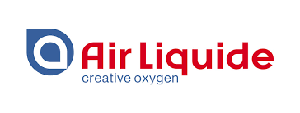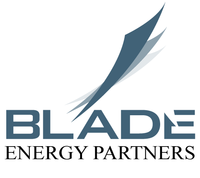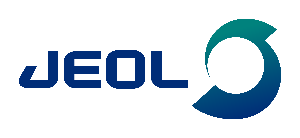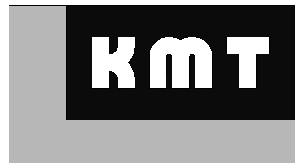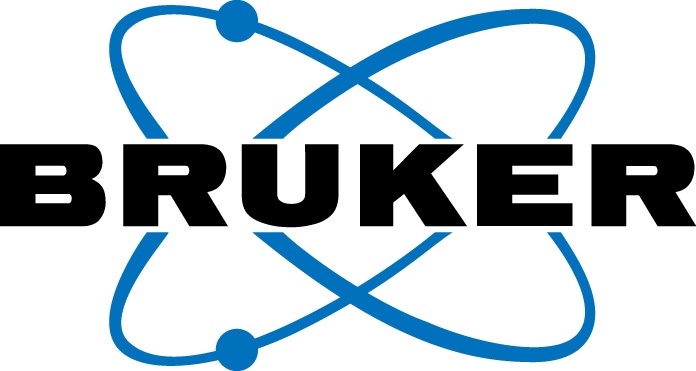Understanding Hydrogen-Materials Interactions
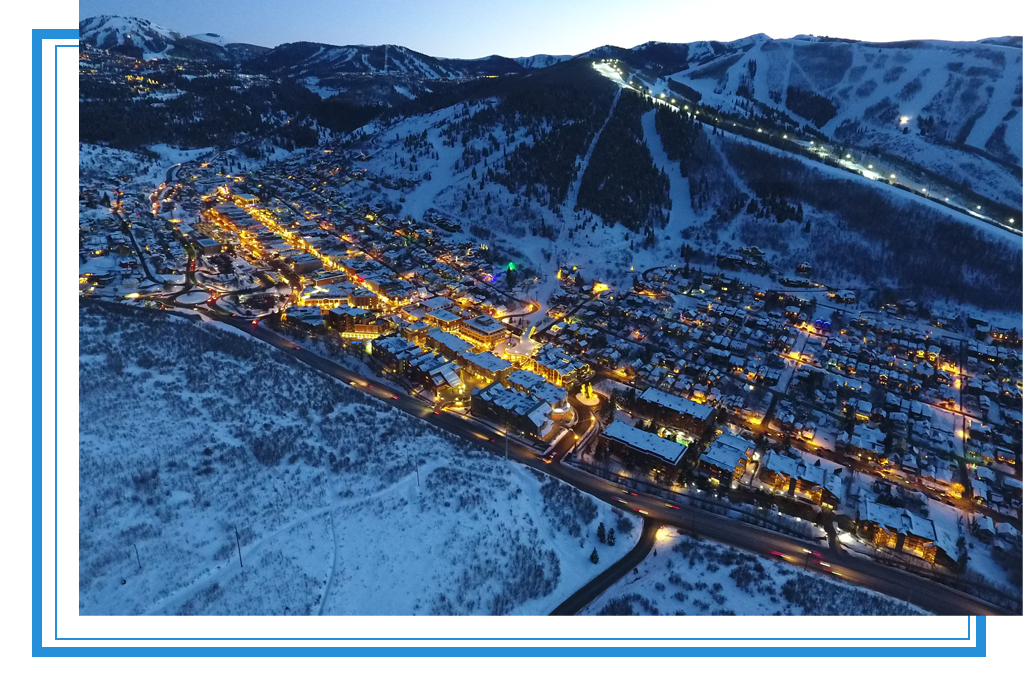
September 17- 21, 2023
Park City, Utah
IHC2023 Final Program and Poster List
Poster Size: 1.0 meter wide and 1.5 meters in length (Portrait style)
Message from the Chairs
Dear IHC Delegates,
We are excited to host the 2023 International Hydrogen Conference. This longstanding and prestigious conference has a rich history of hosting the leading scholars in the field of H-material interactions. The unique single session format, thriving poster sessions, and collegial debate have made the IHC an event that the technical community has enjoyed for decades.
While the pandemic has caused some delays and mandated some changes, we are excited that the 2023 International Hydrogen Conference will maintain its Rocky Mountain heritage. We are confident that delegates will enjoy a robust technical exchange along with opportunities to engage with the world class recreational activities in Park City, Utah.
The H-material interaction technical discipline is experiencing a renaissance where many longstanding challenges are being highlighted as limiting factors for engineering advances critical to the broader society. This has motivated exciting research that has coupled modern experimental technique, characterization approaches, and computational modeling to provide novel insights into the fundamental mechanisms governing H-material interactions.
We look forward to providing a venue for researchers to reunite with colleagues, share their research, and debate their conclusions. We hope to see you in Park City in September 2023!!!
May Martin and Jimmy Burns
IHC 2023 Co-Chairs
Technical Program Committee
Conference Co-Chairs
Prof. Jimmy Burns
University of Virginia, USA
Dr. May Martin
NIST, USA
Committee Members
Dr. Laurent Briottet
CEA/LITEN, France
Dr. Tilmann Hickel
BAM Federal Institute for Materials Research and Testing, Germany
Prof. Jenifer Locke
The Ohio State University, USA
Prof. Masanobu Kubota
Kyushu University, Japan
Dr. Kevin Nibur
Hy-Performance Materials Testing, USA
Dr. Vigdis Olden
SINTEF, Norway
Dr. Joe Ronevich
Sandia National Labs, USA
Dr. Neeraj Thirumalai
ExxonMobil Corporate Strategic Research, USA
Plenary Speakers
We will have four Plenary Speakers for IHC2023. All the speakers will bring a wealth of experience and diverse perspectives to the understand and future of research on H-material interactions.

Idaho National Laboratory
USA
M. Grace Burke is a Laboratory Fellow at Idaho National Laboratory. She was a member of the Distinguished R&D Staff of Oak Ridge National Laboratory in the Materials Science & Technology Division. She was Professor of Materials Performance (now Professor Emerita) at the University of Manchester from 2011 and was also Director of the Materials Performance Centre at the University of Manchester. From 2012 through 2016, she was concurrently the Director of the Electron Microscopy Centre. Prior to joining Manchester in late 2011, she had a 30+ year career that spanned her tenures at the US Steel Research Laboratory, Westinghouse Science and Technology Center, and the Bettis Atomic Power Laboratory. Her research has focused on expanding modern understanding of irradiation damage, SCC, and hydrogen embrittlement of structural alloys. Her current research activities continue to apply advanced analytical TEM and in situ ATEM in liquids and gases to study the nanoscale phenomena that lead to and control the environment-sensitive degradation of structural alloys.
Grace is a physical metallurgist; she received her B.S in Metallurgical Engineering from the University of Pittsburgh, and her PhD in Metallurgy from Imperial College of Science and Technology (London). She is the recipient of the 2021 Henri Coriou Medal of the European Federation of Corrosion, and the 2020 ASM-International Metallographic Society Henry Clifton Sorby Award recipient for her contributions to materials science and metallurgy. Grace was the 2005 President of the Microscopy Society of America and is currently the 2019-2023 President of the Royal Microscopical Society (UK).

EPFL
Switzerland
After gaining a BS and an MS in Physics at Brown University, then a PhD in theoretical physics at Cornell University, Prof. Bill Curtin left the academic world for industry, working in the Applied Physics Group of BP (British Petroleum). There he addressed hydrogen storage in amorphous metal alloys and the mechanics of fiber-reinforced composites, to guide development of materials with enhanced performance. After seven years at BP, he came back to the academic world, but with less focus on physics. He settled down at Virginia Tech and for five years held a position as professor attached to two engineering departments: materials science and engineering mechanics.
He joined the solid mechanics group at Brown in 1998. “Brown had an international reputation in solid mechanics. It was the best place for the type of research I wanted to conduct,” explains the professor. At that point, he had the necessary skills to study the behaviour of materials at all levels. “I had studied phenomena at the atomic and quantum levels during my PhD and at BP, I had modeled composites on the continuum scale. When I arrived at Brown, I was able to leverage these competences and work on multi-scale modeling.”
Bill joined the EPFL as Director of the Institute of Mechanical Engineering in 2012.

Hy-Performance Materials Testing
USA
Kevin Nibur received his BS in Materials Engineering from California Polytechnic State University, San Luis Obispo and a PhD in Materials Science from Washington State University before spending 5 years working at Sandia National Laboratories in the Hydrogen Effects on Materials Laboratory. This was a formative time at Sandia as the hydrogen lab was updated and modernized. Leveraging experience from Sandia, Dr. Nibur went on to found Hy-Performance Materials Testing in Bend, OR in 2011. Here, the laboratory was built from scratch specifically to meet the growing need for mechanical testing in hydrogen gas. Innovative approaches to all aspects of testing, including test chamber design, custom transducers, and lab safety have allowed Dr. Nibur to maintain Hy-Performance Materials Testing in the vanguard of the effort to evaluate hydrogen metal interactions through mechanical testing.
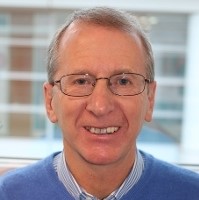
NPL
United Kingdom
Alan Turnbull OBE FRS FREng joined NPL in 1973 and has produced over 250 publications and commercial reports on environmentally assisted cracking, on localised corrosion, and on modelling of corrosion processes, and has been the principal author of twelve international standards. He is a recipient of the T P Hoar Prize (twice); the Bengough Prize (twice); a Technical Achievement Award from NACE International; the Cavallaro Medal; the U R Evans Award; the Whitney Award; the Alex Hough-Grassby Award; the Lee Hsun Lecture Award from IMR, Shenyang, and the China Distinguished Materials Scientists Award, USTB, Beijing. Alan was elected Fellow of the Royal Academy of Engineering in 2011 and Fellow of the Royal Society in 2013. In 2016, he was awarded the OBE for services to science and industry.
Conference Topics
Topics of discussion will include but are not limited to the following:
- H Effects on Mechanical Properties: Fracture
- H Effects on Mechanical Properties: Fatigue
- H Effects on Mechanical Properties: Stress Corrosion Cracking
- H Effects on Mechanical Properties: High Temperature Hydrogen Attack
- H Effects on Mechanical Properties: Mechanisms of Embrittlement
- Advanced Methods for Characterizing H-Metal Interactions
- H-Metal Interactions: Electrochemically Generated H
- H-Metal Interactions: H Generation in Gaseous Environments
- H-Metal Interactions: Uptake, Transport, and Trapping
- H Effects on Non-Metals
- Engineering Perspectives and Approaches to H Challenges
Call for Abstracts
One-page abstracts of 500 words or less (half-page) should be submitted as soon as possible and no later than the deadlines noted below. The abstract should include the context, objective and results of the work to be presented. Please indicate if the abstract is for an oral or poster presentation. Only a limited number of oral presentation slots are available. Thus all submissions for oral presentations will be considered for both oral and poster.
Deadline for abstracts for oral presentations: February 3, 2023
Deadline for abstracts for poster presentations: February 3, 2023
This conference is using a different template, please use this one instead: Please prepare your abstract according to this template: docx or doc.
All abstracts should be submitted here and submissions must follow the template provided at this link.
Conference Program
Special Issue Publication
This year, IHC is proud to be partnering with the International Journal of Hydrogen Energy to have a special issue dedicated to the conference. The name of the special issue is 2023 International Hydrogen Conference: Understanding Hydrogen Materials Interactions. The short title on the submission website will be: VSI: IHC2023: H2 Interact. The submission portal for the special issue (https://www.editorialmanager.com/he) will open July 1 and will remain open until December 15, 2023. This will be a virtual special issue, so papers will be published as they are accepted but will be shown together as a special issue online. We look forward to a strong response from our delegates.
Conference Registration and Fees
Conference Fees
The conference fee includes the following: conference registration, printed program book w/abstracts, accommodations (nights of Sunday (Sept. 17), Monday (Sept. 18), Tuesday (Sept. 19), and Wednesday (Sept. 20)) three breakfast, one lunch, two dinners and coffee breaks and snacks. Incidental fees (telephone calls, faxes, spa, laundry, minibar etc.) are billed to your personal account by the hotel.
ALL PARTICIPANTS (INCLUDING MEMBERS OF THE ORGANIZING COMMITTEE AND INVITED SPEAKERS) ARE REQUIRED TO REGISTER.
The conference fees are:
| The | Register | Register | |
| Participant (single occupancy or sharing room with a guest; guest fee additional) | US $2,575 | US $2,675 | US $2,875 |
| Participant (sharing a room with another participant) | US $2,140 | US $2,240 | US $2,440 |
| Bona fide Graduate Student (sharing a room with another student) (Those in this category must upload proof of current status during registration – copy of current Student ID or a letter from your University confirming your student status) | US $1,725 | US $1,825 | US $2,025 |
| Bona fide Graduate Student (single occupancy or sharing room with a guest; guest fee additional) (Those in this category must upload proof of current status during registration – copy of current Student ID or a letter from your University confirming your student status) | US $2,160 | US $2,260 | US $2,460 |
| **Fees for Guest/accompanying person sharing bedroom with a participant. (Includes all conference included meals and excursion) | US $235 | US $235 | US $235 |
If you plan to bring children to the conference, please contact Kathy Chan for pricing.
Conference Registration
You will need a login name and password to register for ECI conferences through our online system. If you have been a recent participant at an ECI conference or have submitted an online application or request for information about an ECI Conference, you may already have an account with us.
If you know your login information, please use it. If you are not sure whether you already have a login and password, please click on automated password retrieval and enter your e-mail address before creating a new account. If we don’t have a valid email address on file for you, a pop up window will appear stating that no records were found. Click “OK” and then follow the instructions to create a new account. If you have any questions or experience any difficulties, please email Kathy Chan.
Special Notes and Payment Instructions
We suggest that you register as soon as possible to be certain that you will have a hotel room at the conference rate.
All participants are encouraged to register before August 11, 2023. There is a discounted price for registering before this date. Hotel space cannot be guaranteed for registrations received after this date. Your registration is not officially confirmed until we receive payment of the amount due. ECI reserves the right to cancel your room registration if payment is not received. Your invoice/receipt will automatically be e-mailed upon of receipt of your registration. Should you need a signed receipt, please contact Kathy Chan.
Because of contractual guarantees made with the hotel for room and meal functions, no shows, late arrivals, missed meals and early departures cannot receive fee adjustments. If you have a disability and may require accommodation in order to participate fully in this conference, please indicate this when you register. An ECI representative will contact you to discuss your specific needs. If you have special dietary requirements (e.g., vegetarian or a food allergy), please make a note on your registration. The chef needs to know this information in advance if we are to accommodate you. ECI will attempt to accommodate special requests such as Kosher or Halal meals, but such meals may not be available at all conference sites. The participant must pay any additional costs for special meal requests that ECI pays a surcharge for.
Payment must be made by credit card (Visa, MasterCard, and Amex), check or money order drawn on a U.S. bank in U.S. dollars, payable to ENGINEERING CONFERENCES INTERNATIONAL. Checks or money orders in any other currencies are NOT ACCEPTABLE. Payment must be made on the web site except for those who are sending payment by wire transfer or have a purchase order from their company/institution.
WIRE TRANSFER PAYMENT: If you are planning to make payment by wire transfer, please contact Kathy Chan for the bank information. You must add $30 to cover ECI bank charges. Please reference your full name and the conference title. Please email a scanned copy to Kathy Chan. This is very important – otherwise it is extremely difficult to trace your payment and you may not receive a receipt prior to the conference.
Cancellation Policy: Cancellation must be received by ECI in writing at least 28 days prior to the start of the conference in order for a full refund (less a processing fee) to be considered. The ECI auditors require that refunds for all conference cancellations be processed after the conference so that the necessary back-up information (e.g., hotel list of those in-house) can be attached to the refund request and ECI can verify that the hotel has not charged a cancellation fee.
Cancellation fees:
- Cancellations received more than 28 days prior to the conference start date are subject to a processing fee of 4% of the total fee, plus any direct expenses incurred by ECI.
- Cancellations received 15 – 28 days prior to the conference start date are subject to a $250 cancellation fee plus any direct expenses incurred by ECI.
- Cancellations received 8 – 14 days prior to the conference start date are subject to a $500 cancellation fee plus any direct expenses incurred by ECI.
- No refunds will be issued for cancellations received less than 7 days prior to the conference start date.
- No refunds will be issued due to inclement weather or travel disruptions/cancellations.
Registrations may be transferred without incurring any penalty or cancellation fee.
Denied or delayed visa
If a participant is forced to cancel due to a denied or delayed entry visa, ECI will issue a full refund if ECI has been notified of a potential visa issue at least four weeks prior to the conference start date.
Change of payment method
If an attendee who has already paid the conference fee with a credit card requests that the fee be refunded to that card so that it can be paid in a different manner (e.g., charged to an alternate credit card, or paid via check or bank transfer), a processing fee of 4% of the total fee amount will apply.
Disclaimer
It may be necessary for reasons beyond the control of ECI to alter the content and timing of the program or the identity of the speakers. In the unfortunate circumstance that an event is cancelled, ECI is not liable for any costs incurred by participants in connection with their attendance.
Should you have specific questions regarding your registration, please contact Kathy Chan
Pre/Post Conference Reservation
Participants arriving before September 17 or checking out after September 21 can arrange additional nights at the conference hotel by providing the information during registration. Subject to availability. The hotel will call you two weeks prior to your check-in date to collect your credit card information to secure the room for the additional nights. Your credit card will be charged 7 days before arrival. You have until that time to cancel your pre/post nights without penalty.
If the hotel is unable to collect credit card information from you two weeks prior to your arrival, your pre/post nights will be cancelled. ECI is not responsible for non-conference dates and will only confirm your nights of September 17, 18, 19, and 20.
Please contact Kathy Chan if you have any questions.
Conference Sponsors
Conference Hotel
Grand Summit Hotel
The conference will be held at the Grand Summit Hotel, Park City – Canyons Village (4000 Canyons Resort Drive, Park City, UT 84098)
The hotel, part of Vail Resorts, is one of the country’s largest four season destination resorts and stands in the epicenter of the Canyons Resort Village that is 4 miles from Park City Mountain, 5 miles from historic downtown Park City, and 5 miles from the Utah Olympic Park. There is a heated outdoor pool and a hot tub as well as a spa and fitness facilities. All rooms have free Wi-Fi, flat-screen TVs, and tea/coffee making facilities.
Park City, Utah
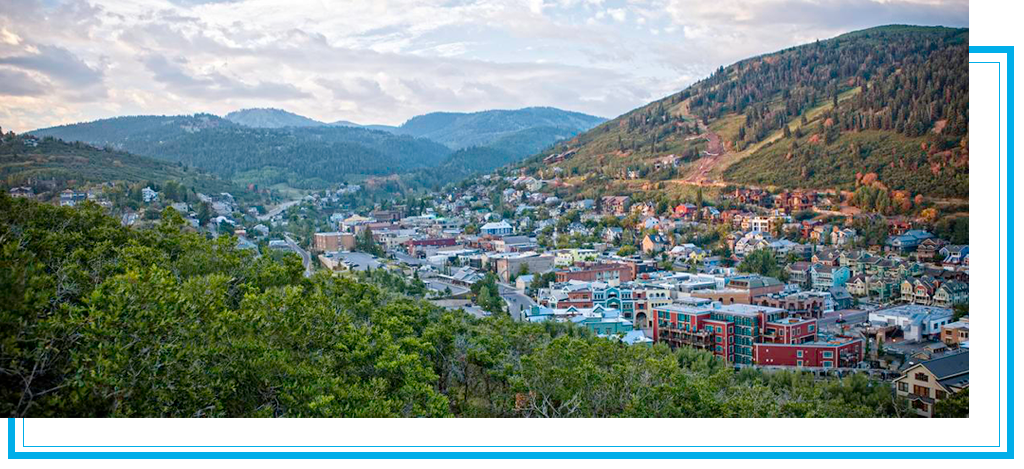
Park City, Utah is less than half a day away from anywhere in the United States, and once you land at the Salt Lake City International Airport, Park City is an easy, 35-40 minute ride from the airport on I-80. It is a superb destination not only for skiing but a year-round recreational haven for hiking, mountain biking, rafting, horseback riding, fly-fishing, zip-lining, alpine sliding and more. The Utah Olympic Park is an active Olympic training site and a dynamic multi-use facility.

Park City began as a silver mining town that re-invented itself as a ski-town and a year-round destination that hosts the annual Sundance Film Festival. It was also a host city of the 2002 Winter Olympics. Days and nights in Park City are filled with exceptional food, endless recreation and enduring impressions. The average high temperature in September is 76F/24C and the average low temperature is 39F/4C.
In 1868, a group of prospecting soldiers stationed near Salt Lake City discovered silver in the hills surrounding what is today Park City, with sizable strikes following shortly thereafter. In 1872, a trio of prospectors tapped into an extremely rich silver vein in Ontario Valley. Word of the strikes spread quickly and adventurers from around the world flocked to the area, turning the tiny camp into a boomtown. The new population soon put down roots. Wooden mining shacks were quickly constructed and schools, churches and businesses were established. In 1884, Park City was incorporated as a town.
The town’s residents enjoyed great prosperity for half a century. The mountains surrenders over $400 million in silver and established many fortunes. Park City was one of the few Utah towns established by non-Mormons. During the mining boom, 27 saloons existed on Park City’s Main Street to “wet the whistles” of thirsty miners. This rebellious streak continues today as Park City is home to over 100 bars and restaurants.
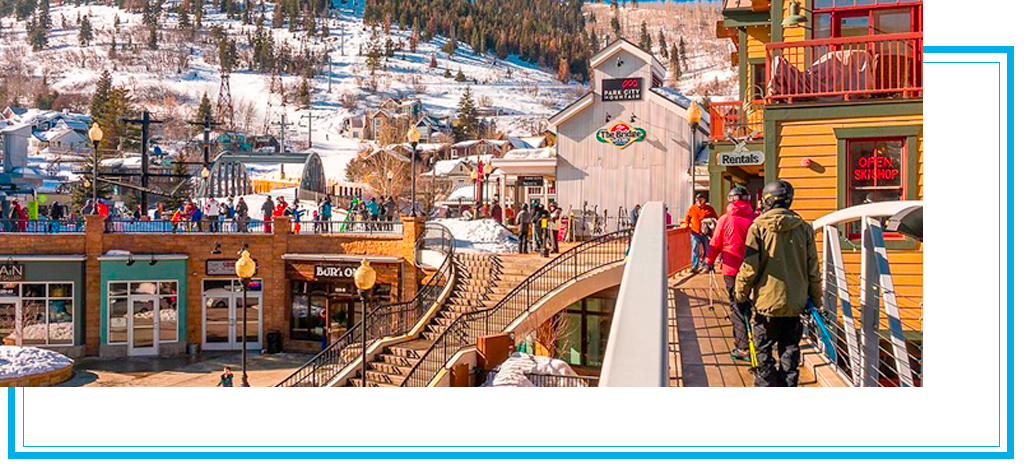
By the 1930s Park City residents turned their attention from mining in the mountains to the snow on the mountain slopes. The town qualified for a loan from the Federal Area Redevelopment Agency and ski resorts became the main feature of the town. Today, Park City is a unique blend of the old and new. Sixty-four of Park City’s buildings ae listed on the National Register of Historic Places, many of which are located along the town’s Main Street, and more than 1,200 miles of tunnels wind through the surrounding mountains, remnants of the mining era. To learn more, one can visit the Park City Museum.
To request a visitor guide: https://www.visitparkcity.com/explore/request-a-brochure/
To request a monthly travel newsletter for upcoming events: https://www.visitparkcity.com/explore/newsletter/
For overall information, go to the Visit Park City website: www.visitparkcity.com
Restaurants
Park City has a rich and diverse food scene. Over the past few years, a number of ward-winning restaurants have established in Park City, along with high-end breweries, wineries and distilleries. There is also no shortage of casual and delicious breakfast and lunch spots, with bright and airy cafes and coffee shops dotting Main Street and beyond.
For lists of popular restaurants, go to www.eater.com, www.femalefoodie.com, www.visitparkcity.com
For information on Utah liquor laws, bars and nightlife, go to www.visitparkcity.com
Transportation
Transit within Park City
- Free Park City Transit System
- High Valley Transit – a new transit service that offers fare-free fixed route and micro-transit service throughout the Wasatch Back region LINK
- Summit Bike Share – (requires payment) – sets you free to explore Park City on two wheels LINK
- Transit to Trails – a pilot program that is a great way to access upper elevation trailheads, including Mid-Mountain, Bonanza Flat, and Bloods Lake LINK
Transportation Options from the Airport
Past International Hydrogen Conferences
- 2016 | Website | Full Program [PDF]
- 2012 | Full Program [PDF]
- 2008
General Information About ECI
Engineering Conferences International (ECI) is a not-for-profit, global engineering conferences program, originally established in 1962 that provides opportunities for the exploration of problems and issues of concern to engineers and scientists from many disciplines.
The format of the conference provides morning and late afternoon or evening sessions in which major presentations are made. Poster sessions will be scheduled for evening discussion as well. Available time is included during the afternoons for ad hoc meetings, informal discussions, and/or recreation. This format is designed to enhance rapport among participants and promote dialogue on the development of the meeting. We believe the conferences have been instrumental in generating ideas and disseminating information to a greater extent than is possible through more conventional forums.
All participants are expected both to attend the entire conference and to contribute actively to the discussions. The recording/photographing of lectures and presentations is forbidden. As ECI conferences take place in an informal atmosphere, casual clothing is the usual attire.
Smoking is prohibited at ECI conferences and conference functions.


